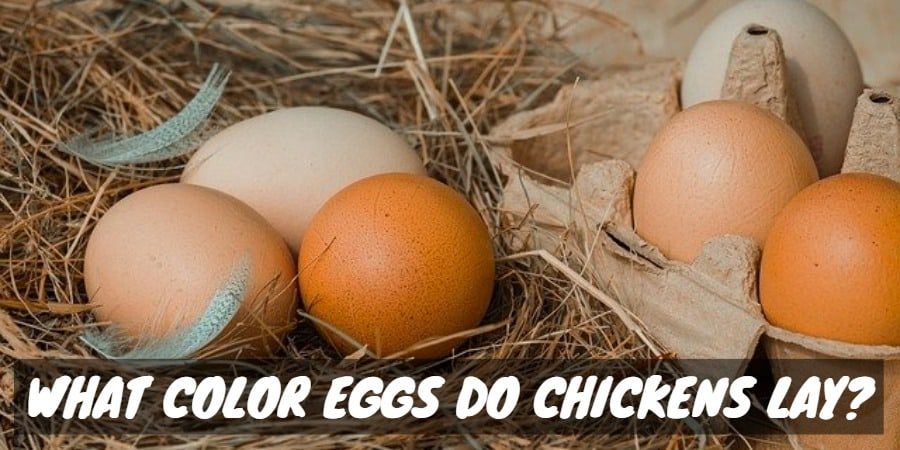Chickens are one of the most resilient animals on the planet, but they do have limits. Raising chickens during winter requires some additional steps that we must take to get the most from them. For instance, cold hens won’t lay eggs. Weaker members of the flock can even get sick and die from cold weather.
Some farmers will use heat lamps to keep their chicken coops warm, but what happens when they malfunction? They can actually lead to even worse problems, like fires.
So we’re not going to limit this post to electrical methods. Let’s think outside of the box and look at some of the best ways to keep your chickens warm during winter.
Make Sure You Get the Right Breed of Chicken for Your Climate
If you are still in the planning phase of your mission to raise chickens, then make sure you are getting the right breed. Certain breeds of chickens are much more adaptable to the cold because they are a bit heftier. This is one of the most important steps to raising chickens. You must ensure that the breed is ideal for your climate.
Chickens that are thinner and have large combs – the fleshy growth or crest on the top of the chicken’s head – tend to suffer the most during the winter months. Even when we take steps to acclimatize them, they still struggle with the cold.
Insulate the Chicken Coop

Insulating the chicken coop is the best way to prepare it for the colder months before the weather becomes a factor. There are several ways that you can do this. For starters, if you have the money, then you can use foam or fiberglass insulation to line the walls. Cover it with plywood, and you’re good to go. You have to be sure the insulation is covered with wood because the chickens are going to pick at it.
[amazon bestseller=”chicken coop insulation” items=”1″ filterby=”title” filter=”coop” title_length=”255″ description_length=”100″ description_items=”255″ orderby=”rating”]
For those of you who might not have enough money, then you can hang large blankets on the walls to help keep the chill down. It’s not the perfect solution, but it does work. Some chicken farmers will also stack bales of hay against the walls to help insulate it.
Just keep in mind that insulating the chicken coop doesn’t mean that you should make it airtight. All chicken coops require proper ventilation so that polluted air can escape.
Drill holes in the wall where it meets the ceiling and then cover that hole with a cloth so that air can still flow through it. Do this in several strategic locations around the coop.
Close off a Specific Portion of the Coop
The inside of a chicken coop will get warmer at night due to the chickens’ body heat being released into the air. So if chickens are in a smaller area, then their body heat will make it warmer. Larger areas are much more difficult to keep warm without artificial means. There is a way to work around it though. Close off a smaller section of the chicken coop and force chickens into that area during the winter months. Then open the area back up once winter ends.
You can do this with plastic sheeting or by hanging blankets. A lot of people will even have temporary walls built that can easily be taken down once winter has ended.
Provide Quality Water and Feed During Winter

Chickens will eat more during the winter to help regulate their body temperature, so it’s important that you take this into account. You should give them extra feed during the winter so that they can eat their fill. Any chickens that are going through a molt should also be given extra protein. That helps them grow feathers faster and prevents them from getting too chilly. Boosting protein is easy. Mealworms or other hearty winter treats will promote the growth of feathers.
[amazon bestseller=”Mealworms for chicken”]
Toss some chicken scratch on the ground too so that your birds have something to keep them busy. It will also help add a little more weight.
Water is also problematic during the winter. It can freeze and chickens will not be able to access it. Check it three or four times a day to make sure that it’s not frozen.
Build Roosts for Your Birds
Roosting is a natural way that chickens can stay warm. It gets them off the floor and into a roost so that they can huddle together. Roosts must be large enough for all of your chickens. If you notice that some of your hens are on the floor while others are roosting, then you need to make the roosting area larger.
Be sure to check their roosting bars. If they happen to be near a window or a door, then move them. Drafts can disrupt feathers and dangerously chill chickens while they are trying to roost.
The roost area must be large enough so that chickens can completely cover their feet while sitting on it. Chickens that cannot wrap their toes all of the way around the roost are at risk of getting frostbite.
Building Your Own Chicken Brooder for Baby Chicks
Chicken brooders – equipment to hatch and raise chicks yourself – are designed to replace the warmth of mother hens. Their job is to keep chicks warm as they develop through the first few weeks of their lives. Building your own brooder is actually easy so let’s take a closer look.
Chicks need one square foot per bird while they are in the brooder. If they are packed too tightly, then they might start getting aggressive and develop bad behavior. If you find that your chicks need more room, then you can always add a second cardboard box. Tape it to the brooder and cut a hole between the two for chicks to move.
The bedding should be something soft like wood shavings. Just be sure that you don’t use cedar since chickens are allergic to it. Shredded paper and straw are also a good choice.
Finally, we move onto the most important feature of the brooder – the heat lamp. Rather than placing the lamp in the center of the brooder, consider installing it on one side so that the chicks have room to adjust. Hold your hand over where the chicks will be living to make sure that the heat is not unbearably hot.
[amazon bestseller=”heater for chicken coop”]
If your hand cannot feel the heat, then lower it slightly until you can feel it. It’s also important to observe your chicks’ behavior for the first couple of days to make sure they are comfortable. If they huddle up into a group, then they are not getting enough heat.
If you’re using a cardboard box for your brooder, then make sure that it does not touch the heat source since it can catch on fire. Hang the lamp above the brooder rather than clipping it directly to it.
At What Age Is It Safe to Allow Chickens to Go Outside in the Cold?

Chicken growth charts are difficult to find so it’s tough for beginners to know when it’s okay to let chicks out into the cold for the first time.
Generally speaking, chicks need to be fully feathered to regulate their body temperatures, which occurs at some point between weeks ten and twelve. So they should initially be placed in rooms where the temperatures are high until they are fully feathered. Only then can you safely let them roam (without supervision) outside the chicken coop in the cold without a heat source.
We’re discussing here raising chicks during winter, not summer. If you live in a warmer tropical climate, it’s perfectly okay to let your chicks out earlier, but I’d still be careful until they’re fully featured as windy and/or rainy environments may be too much for them to bare.
When hatched, the temperature should be somewhere around 95 degrees and then, as a best practice, reduced by 5 degrees every week. This generally occurs for the first six weeks of the chick’s life.
Once chicks reach the six-week-old mark, you can turn off the heat lamp and let them experience the weather inside of a controlled environment. You shouldn’t expose them to extremes, so by removing the heat lamp, you are gradually acclimating them to normal weather. This process takes approximately six weeks before the chicks will be fully featured and safely able to roam outside the comforts of the chicken coop.
Just keep in mind that even if it’s warm outside, if it’s windy and/or wet then the chill might still be too low for chicks.
Once a chick is outside, there are some illnesses that they are quite susceptible to. Coccidiosis is a common one that chicks spending time outside can contract. It’s also easy to treat but you will have to stop letting these birds outside for a few days and treat them.
Outside playpens should be constructed in a way that is fully enclosed so chicks cannot get out of them. Cover the tops at all times to protect from predators as some birds are a big threat to your chicks. If they are in a playpen that is not being supervised and has no top, then you should place them inside of the coop.
Never allow chicks to be outside when it’s raining. If you happen to notice them huddling together rather than exploring, then you should also take them back inside. That is a sign it’s too cold for them.
There are other steps that make it easier for chicks to acclimatize:
• Make sure their bedding stays clean
• Provide plenty of food and water
• Pay attention to how they act when exposed to colder weather
Cuddling is a sign that the birds are too cold. When they get comfortable, you’ll notice them flapping happily about and pecking the ground.
Conclusion: Chicks Require a Lot of Tender Care
Chicks require a lot of tender care and attention during the first few weeks of their life. You will have to dedicate time to them, making sure that their environment is optimal. It’s essential that you observe your chicks closely the first time you place them into an outside coop. That way, you can be sure they are not struggling with the cold weather.




